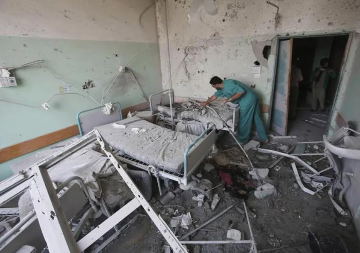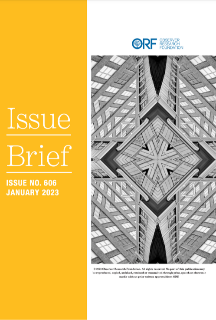With the 'Addu Declaration', issued at the conclusion of the 17th SAARC Summit in Maldives, resolving to take the maritime and rail linkages among member-nations forward and with tangible goals set for the present, there is promise of SAARC moving forward to integrate South Asian economies. The decision for India, Maldives and Sri Lanka to cooperate in building maritime connectivity and for India, Bangladesh and Nepal to develop railway links will go a long way in bringing SAARC goals nearer to achievement full 25 years after the concept of South Asian cooperation was given some practical shape. Each of these components need to be expanded to cover other nations in the region. Bringing Afghanistan and Pakistan, into this process of building maritime and rail-road linkages in South Asia acquires importance, if the current initiative were not to be lost.
The success of SAARC depends on a variety of factors, both internal and external. First, there is the question of political resolve in member-nations to implement all the various declarations and decisions of SAARC summits. Differences between India and Pakistan have hampered the speedy completion of the SAARC agenda from the beginning. The inclusion of Afghanistan as a full-fledged SAARC member has brought in both opportunities as well as challenges. Earlier the focus was on India-Pakistan differences as obstacles to progress. Now it is for Pakistan to address issues pertaining to fundamentalism and terrorism which affect the region and sort out the problems in its relations with Afghanistan. Pakistan will also have to shed its perceived security concerns related to Afghanistan and also facilitate over-land connectivity and two-way movement of goods between India and Afghanistan.
The India-Pakistan differences are really not as insurmountable as they might appear. Mutual trust will help to resolve them in course of time. Unfortunately, terrorism sponsored from Pakistan territory has continued to make neighbouring India look at Islamabad with suspicion. There seems to be some realisation in Pakistan's political circles about the need for working closely with Afghanistan and India even to eradicate terrorism from its soil. Pakistan-based terror groups, often assisted by the ISI, have also been using the territory of other SAARC nations, particularly Nepal and Bangladesh, to target India, which has give cause for concern to these countries also. Apprehensions now exist even in Maldives and Sri Lanka.
India's role and responsibility
SAARC has taken 25 long years to reach where it is today. The growth of Indian economy during this period, and the opportunities that it offers to India's South Asian neighbours, jointly and severally, were not there when SAARC was founded. India's place in the global economy has given New Delhi a certain leverage and confidence to look at SAARC, and indeed at the world beyond, in full awareness of its responsibilities and role in contributing to their economic advancement.
South Asia's economic integration will help India's growth as much as the economic growth in its SAARC neighbours. Given the fact that the global economic turmoil has left very few nations, regions and groupings unaffected, for India to sustain its own economic growth it should help to develop the markets in South Asian countries and, at the same time, open up its own vast market to them. India's economic success has contributed to a new awareness in these countries of their larger neighbour being more of a source of support and cooperation than of irritation. There are indications of fairly common desire to sort out the differences and irritants that their countries may have with India.
In the new environment of a fast globalising world, cooperation for a better future takes precedence over political confrontation and contention left over by history. In an environment of cooperation, willing neighbours will find India open-mined and generous in dealing with them. Even as efforts must continue to peacefully resolve lingering bilateral problems, SAARC countries must work together for the larger goal of peace, progress and prosperity of their people.
Common currency for SAARC?
Though SAARC's founders had contemplated the EU model for it, the Association has been reluctant even to consider measures such as a SAARC passport for greater freedom of movement and unhindered trade, not to speak of open borders and single currency for the region's integration. The Addu Summit was characterised by the usual timidity in this regard. The Summit Declaration chose not even to mention a forward-looking suggestion by the Sri Lankan President, Mahinda Rajapaksa, for a 'South Asian currency'.
However, Maldives has taken the initiative to begin discussions with India and Sri Lanka about direct exchange of its ruffiah against the currencies of the other two nations. For Maldives, in particular, the measure would yield immediate benefit. India and Sri Lanka are its major trading partners and earning US dollars to pay for imports has been a major problem for the country. The solution should lie in balancing the books between SAARC members in terms of dollars and expanding the experiment to cover bilateral arrangements among all SAARC members. Common SAARC currency is an idea the adoption of which may become unavoidable, after a time, when there is greater integration of SAARC economies, including on the labour front.
Migrations in search of employment in the region are a problem and varying restrictive visa regimes are a part of it. India's neighbours are complaining about the non-availability of the facility of visa-on-arrival regime in India. Maldives offers this facility to all nations owing to its needs as a global tourist destination. Sri Lanka, which used to be open, has begun to review the position: it has decided that the facility has to be bilateral. India has genuine concerns in regard to security and unauthorised movement of individuals. Experience, however, has shown that ban on travel movement has not made the security situation any less worrisome. For Sri Lanka, the source of apprehension is different: Colombo is reluctant to enter into a Comprehensive Economic Partnership Agreement (CEPA) because of its fears about Indian professionals and skilled labour flooding its market. India could have similar apprehensions, and a via media needs to be found at the SAARC-level. Issues remain between India and Bangladesh, on the labour front.
SAARC needs to evolve a common economic and fiscal policy for an effective free trade area. The Indian decision announced at Addu, to prune the 'Sensitive List' from 425 tariff-lines to 25, is a big positive step in the direction of economic integration of the SAARC countries. Moving in slow and halting steps, SAARC has, nevertheless, gathered some strength. The setting up of the SAARC University in New Delhi will create greater awareness among the young of the region of their common heritage, shared interests and help promote common standards in higher education.
The harmony and the spirit of mutual understanding and cooperation witnessed at the Addu Summit should, one hopes, lead to SAARC countries speaking with one voice on important issues in international arenas regardless of bilateral difference such as those between India and Pakistan. Complex bilateral problems are best left to be resolved through bilateral negotiations. The SAARC mandate rightly prohibits raising of such issues in the group's meetings at different levels.
Perhaps, the most important feature of the 17th SAARC Summit was the one pertaining to the promotion of maritime and rail connectivity among three of the region's eight countries. Much improved connectivity - maritime and on-land, duly extended to cover all member countries, will lead to reintegration of the region, which was, not-so long also, one single whole.
(The writer is a Senior Fellow at Observer Research Foundation)
The views expressed above belong to the author(s). ORF research and analyses now available on Telegram! Click here to access our curated content — blogs, longforms and interviews.




 PREV
PREV


